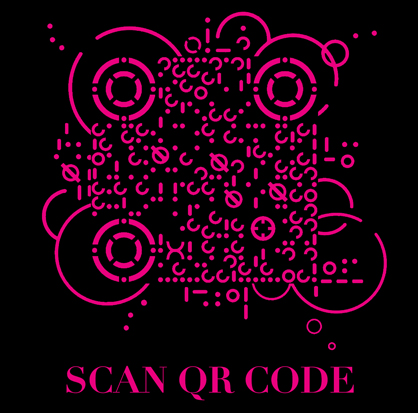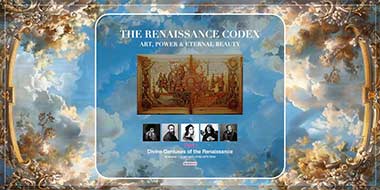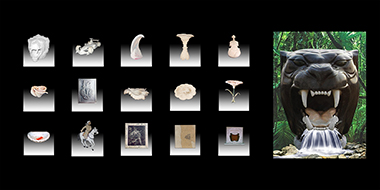SHITAO
“Shitao, A Qing Dynasty Painter And Poet, Revolutionised Chinese Art With Expressive Brushwork, Spiritual Depth, And A Philosophy Of Individual Creativity.”
BY MEEKAR - 23 AUGUST 2024
Shitao (石涛), born Zhu Ruoji (朱若极) in 1642, was a renowned Chinese painter, calligrapher, and poet during the late Ming and early Qing dynasties. He was a descendant of the imperial Zhu family of the Ming dynasty, which heavily influenced his life and artistic career, especially after the fall of the Ming dynasty in 1644. His works, often steeped in philosophical depth, display a unique blend of tradition and personal innovation, marking him as one of the most distinctive and influential artists in Chinese history.
Born in Quanzhou, Guangxi province, Shitao belonged to the royal family of the Ming dynasty. The collapse of the Ming dynasty at the hands of the Manchus, who established the Qing dynasty, had a profound impact on his life. With the fall of the dynasty, many members of the Ming royal family were killed, and Zhu Ruoji was forced to flee and live in obscurity. As a child, he was sent to a Buddhist monastery to avoid persecution, adopting a religious life and later becoming a monk.
In his early years, Shitao travelled extensively, moving through southern China, particularly the culturally rich areas of Jiangsu and Anhui. His monastic life greatly influenced his approach to art, combining Buddhist spirituality with Daoist ideas and Confucian values, which would later manifest in his paintings and writings.
— MeeKar
SHITAO
“Shitao, A Qing Dynasty Painter And Poet, Revolutionised Chinese Art With Expressive Brushwork, Spiritual Depth, And A Philosophy Of Individual Creativity.”
Artistic Style And Philosophy
Shitao’s paintings stand out for their expressive brushwork, bold use of ink, and unique perspective that broke away from the orthodox styles of his time. He rejected the rigid imitations of classical models that were popular among literati painters of the Qing dynasty. Instead, Shitao emphasized individual creativity, advocating for spontaneity, innovation, and the artist’s connection to nature. His famous quote, “The brush should be wild, not cautious,” encapsulates his approach to painting.
Shitao’s style is often associated with Qiyun Shengdong (气韵生动), meaning “spirit resonance” or “vital energy,” a key concept in Chinese aesthetics. He believed that painting should not merely replicate the physical appearance of nature but capture its underlying essence and energy. His landscapes are particularly noted for their emotional intensity, with sweeping brushstrokes and unconventional perspectives that convey a sense of dynamic movement and personal interpretation.
Key Works And Innovations
One of Shitao’s most famous works is the “Ten Thousand Ugly Ink Dots” (万点皴法). This painting exemplifies his innovative use of brush and ink. In it, Shitao applied layers of small, dot-like strokes, creating a rich texture and atmospheric depth. The technique differed from traditional landscape painting, where brushstrokes were more formulaic and uniform.
Another major contribution was his “Manual of Painting” (Huayulu 画语录), a treatise where he laid out his philosophy of art. In it, he rejected the classical canons of painting and called for a return to the primal source of creativity, one’s mind. Shitao believed that true artistry came from self-expression and that the artist should be unbound by the limitations of previous conventions.
His landscapes often feature towering mountains, flowing rivers, and sparse human presence. In paintings like “Reminiscences of Qinhuai River”, he evokes the majesty and grandeur of nature, using broad, sweeping strokes and a minimalistic colour palette. The simplicity of his brushwork belies the complexity of the emotions and ideas embedded in the compositions.
Influence And Legacy
Shitao’s contributions to Chinese painting were immense. Though he lived during a period when orthodox and traditionalist painting styles were dominant, his work challenged these conventions. His emphasis on personal freedom, emotional depth, and spiritual expression set him apart from his contemporaries and earned him a place among the most revered figures in Chinese art history.
In the centuries following his death in 1707, Shitao’s influence continued to grow. Later Chinese artists, especially those in the literati and modernist schools, looked to his works as a source of inspiration. His paintings are celebrated not only for their technical mastery but for the philosophical depth that transcended the constraints of his era.
In modern times, Shitao’s works have been reevaluated as part of the broader canon of global art history. His unique vision, often seen as a bridge between classical Chinese painting and modern art, resonates with contemporary audiences who appreciate the balance between tradition and individual expression. His paintings, with their abstract qualities and expressive energy, have been compared to the works of Western modernists like Cézanne or Van Gogh.
Shitao’s life and work embody the spirit of an artist who transcended the turbulence of his time, using art as a means of personal expression and philosophical inquiry. His unique blend of innovation and tradition, along with his rejection of artistic orthodoxy, has left an indelible mark on Chinese painting. Through his landscapes and writings, Shitao invites viewers not just to see the world as it is, but to engage with it on a deeper, more spiritual level, one where art becomes a medium for expressing the profound connection between humanity and nature.























































































